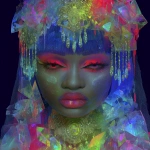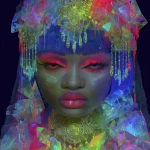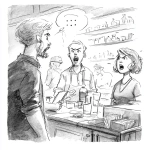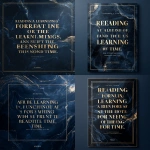Explore the Best AI Image Gallery

Pixels on Your Skin: How AI is Transforming Product Photography
The world of product photography is undergoing a dramatic transformation, fueled by the rapid advancements in artificial intelligence (AI). No longer confined to static shots and predictable angles, AI is injecting creativity, efficiency, and personalization into this crucial aspect of e-commerce and marketing. From generating realistic renders to automating tedious tasks, AI is reshaping the very fabric of how we capture and present products.
A Canvas of Possibilities: Creative Applications of AI in Product Photography
- Style Transfer: Imagine transforming a simple product photograph into a stunning Renaissance masterpiece or a vibrant pop art explosion. AI-powered style transfer algorithms can seamlessly apply artistic styles to images, adding a unique and captivating touch to product visuals.
- Generative Design: AI can go beyond simply enhancing existing photographs. It can generate entirely new product visuals based on specific parameters and design briefs. This opens up exciting possibilities for concept development and exploring innovative product iterations.
- Dynamic Lighting and Backgrounds: Say goodbye to static backdrops and limited lighting options. AI algorithms can simulate various lighting scenarios and create realistic backgrounds, adding depth and dimension to product photography.
Efficiency Unleashed: Streamlining Product Photography with AI
Beyond its creative potential, AI is revolutionizing the efficiency of product photography workflows:
- Automated Image Editing: Time-consuming tasks like color correction, retouching, and background removal can now be automated using AI, freeing up photographers to focus on more creative aspects.
- 3D Reconstruction from 2D Images: AI algorithms can create detailed 3D models of products from multiple 2D photographs, enabling virtual product experiences and interactive visualizations.
- Product Variant Generation: With AI, businesses can generate numerous variations of a product image (different colors, sizes, accessories) automatically, reducing the need for extensive physical photography sessions.
Navigating the Ethical Landscape
As with any powerful technology, the integration of AI into product photography raises important ethical considerations:
- Bias and Representation: AI algorithms are trained on massive datasets, which can inadvertently perpetuate existing biases in representation. Its crucial to ensure that AI-generated imagery reflects diverse perspectives and avoids reinforcing stereotypes.
- Transparency and Accountability: The decision-making processes of AI algorithms can be complex and opaque. Its essential to promote transparency in how AI is used in product photography and establish clear lines of accountability for potential biases or errors.
- Authenticity and Consumer Trust: As AI becomes more sophisticated, it raises questions about the authenticity of product visuals. Consumers should be informed when AI has been used in image creation to maintain trust and transparency.
Future Trends: The Evolving Landscape of AI-Powered Product Photography
The future of AI in product photography is brimming with exciting possibilities:
- Personalized Visual Experiences: Imagine AI tailoring product images to individual customer preferences, creating a more engaging and personalized shopping experience.
- Interactive Product Visualization: AI-powered tools will enable customers to virtually interact with products, explore different angles, and customize features before making a purchase.
- AR/VR Integration: The convergence of AI, augmented reality (AR), and virtual reality (VR) will create immersive product visualization experiences, blurring the lines between the physical and digital worlds.
As AI technology continues to evolve, its impact on product photography will only intensify. By embracing its creative potential while navigating ethical considerations responsibly, businesses can leverage AI to create captivating visual narratives that resonate with consumers and drive engagement in the ever-evolving world of e-commerce.

](https://images.ai-img.art/thumbnails/150/60973df1d727dbbf8e6922b7e4836814ab6012106eb9dcfe99aea7aec15f3710.webp)



](https://images.ai-img.art/thumbnails/150/26c16e4f635deee86633de398088ca98d9bb748d6e7601436b07e882fab236cb.webp)


](https://images.ai-img.art/thumbnails/150/6c909fd6d38caac6572b592dd97831deb7d6562bba142798574677582676dfc1.webp)








](https://images.ai-img.art/thumbnails/150/184b4b030e30be0a6d51b544226cb4cf2271977814d935d3aaa2b7529355b3b7.webp)











](https://images.ai-img.art/thumbnails/150/e6a179db327f0374ec327d0fdab48ac1f2dc47123eed103b0a41ed346280d07d.webp)


](https://images.ai-img.art/thumbnails/150/1202074d0d60b08b64d0f91f36468608aaac200a02b721cc8e6d8ec8a908432c.webp)












](https://images.ai-img.art/thumbnails/150/655229c40961cb7ff5abd4b4190e02c94ea1a961106e7547a562649c945268be.webp)



